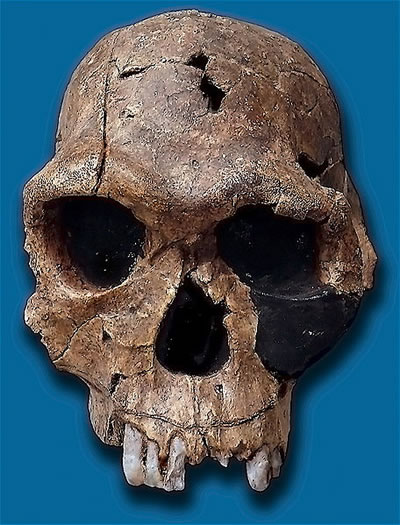Homo habilis was one of the earliest relatives of modern humans to use tools.
Its name means "skillful man" or "handy man".
It lived about two million years ago.
Homo habilis was shorter than modern humans. It did not reach much more than four feet tall, but its arms were longer in proportion to its body.
It had small teeth and a protruding nose.
Homo habilis had a brain that was about twice as big as the brains of the Australopithecines but much smaller than the brains of modern humans.
 Males were much larger than females.
Males were much larger than females.
The first Homo habilis fossils were discovered by Mary and Louis Leaky in Olduvai Gorge in Tanzania, East Africa in the early 1960s.
Since then, other fossils have been found in Olduvai Gorge as well as near Lake Turkana in Kenya, and in South Africa and China.
Homo habilis lived in social groups and made tools using stone flakes.
When Homo habilis was alive, Olduvai Gorge was a large saltwater lake. It was full of fish and the surrounding area was teeming with animal life,
Campsites containing Homo habilis remains have been found around the lake. These campsites also contain animal bones that look as if they have been broken intentionally. Some have cut marks made by stone tools that were cutting away the meat.
Stone tools, known as Oldowan tools, and cut bones have also been found in other places where Homo habilis fossils have been found.
Homo habilis probably used tools for scavenging rather than for hunting. It used tools to pick meat off animals that had already been killed by predators and to extract marrow from animal bones.
It ate fruit and plants as well as meat.